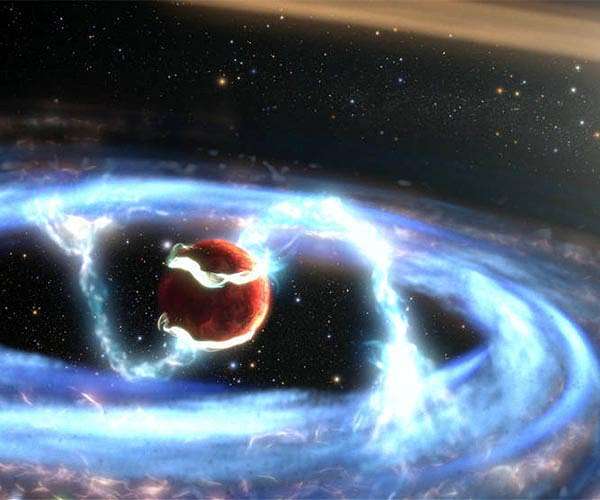9.07.2024

The majority of stars in our galaxy host planets, with sub-Neptunes, which are planets sized between Earth and Neptune, being the most common. Estimating their density has been a significant challenge for scientists because the method used to measure their mass highlights two distinct populations: dense and less dense. Recent work by the NCCR PlanetS, the University of Geneva (UNIGE), and the University of Bern (UNIBE) suggests that these differences are due to physical reasons rather than observational biases. Details of this study can be found in the journal Astronomy and Astrophysics.
Exoplanets are abundant in our galaxy, and the most common are those between the radius of Earth (around 6,400 km) and Neptune (around 25,000 km), known as "sub-Neptunes." It is estimated that 30% to 50% of sun-like stars host at least one sub-Neptune.
Calculating the density of these planets involves measuring their mass and radius. However, a problem arises: planets whose mass is measured by the TTV (Transit-Timing Variation) method appear less dense than those measured by the radial velocity method.
"The TTV method involves measuring variations in transit timing. Gravitational interactions between planets in the same system slightly modify the timing of their transit in front of their star," explained Jean-Baptiste Delisle, a scientificcollaborator in the Astronomy Department of the UNIGE Faculty of Scienceand co-author of the study. "The radial velocity method, on the other hand, measures the variations in the star's velocity induced by the presence of the planet."
An international team led by scientists from NCCR PlanetS, UNIGE, and UNIBE has published a study explaining this phenomenon, attributing it to physical reasons rather than selection or observational biases. "The majority of systems measured by the TTV method are in resonance," said Adrien Leleu, assistant professor in the Astronomy Department of the UNIGE Faculty of Science and principal author of the study.
Two planets are in resonance when their orbital periods are in a simple ratio, such as one planet making two orbits for every one orbit of another. If several planets are in resonance, it forms a chain of Laplace resonances. "We wondered whether there was an intrinsic connection between density and the resonant orbital configuration of a planetary system," continued the researcher.
To establish the link between density and resonance, astronomers first ruled out any bias in the data by rigorously selecting planetary systems for statistical analysis. For instance, a large, low-mass planet detected in transit requires more time to be detected in radial velocities, increasing the risk of observational interruption before the planet is visible in the radial velocity data.
"This selection process would lead to a bias in the literature favoring higher masses and densities for planets characterized with the radial velocity method. Without measurements of their masses, the less dense planets would be excluded from analyses," explained Adrien Leleu.
After cleaning the data, astronomers determined, using statistical tests, that sub-Neptunes in resonant systems are less dense than those in non-resonant systems, regardless of the method used to determine their mass.
The scientists propose several possible explanations for this link, including the processes involved in planetary system formation. The study's main hypothesis is that all planetary systems initially converge towards a resonance chain state, but only 5% remain stable. The other 95% become unstable, breaking the resonance chain and causing events like collisions between planets. These collisions result in the planets fusing, increasing their density, and then stabilizing in non-resonant orbits.
This process creates two distinct populations of sub-Neptunes: dense and less dense. "The numerical models of planetary system formation and evolution developed at Bern over the last two decades reproduce exactly this trend: planets in resonance are less dense. This study also confirms that most planetary systems have experienced giant collisions, similar to or even more violent than the one that formed our Moon," concluded Yann Alibert, professor at UNIBE's Space Research and Planetary Sciences Division and co-director of the Center for Space and Habitability, and co-author of the study.
Quelle: SD
